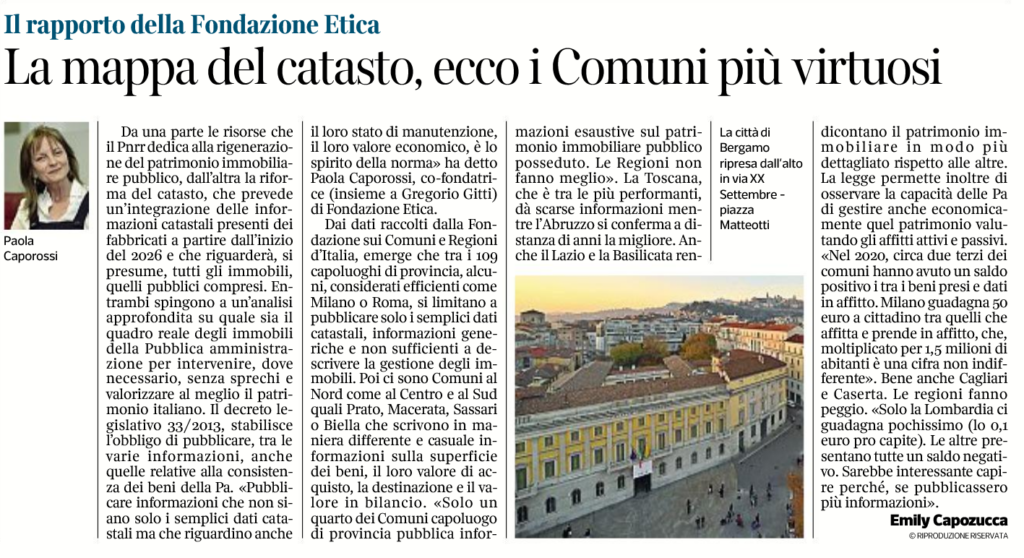
Corriere della Sera has published the data from the Index of Administrative Capacity of Fondazione Etica relating to the reporting and valorisation of public buildings.
After the scandals of "rental towns" in Rome, and beyond, it has become urgent to make known how Regions and Municipalities manage public buildings and how they inform citizens.

PUBLIC REAL ESTATE ASSETS, BETWEEN PNRR AND REFORM OF THE LAND REGISTRY
The PNRR has allocated significant funds to invest in the regeneration of public real estate assets, and, at the same time, the Government has launched the process of reforming the cadastre, which will presumably concern all properties present in Italy, including public ones. Both are good news. But on one condition: that no action is taken in the dark on this front as well. Too often reforms and investments are made in Italy without first proceeding with a detailed mapping of the existing situation, a mapping which, on the other hand, is essential for targeted and, therefore, effective investment and reform.
The concern to avoid proceeding in the dark is not new: it was expressed ten years ago by the legislator who, with Legislative Decree 33/2013, made it compulsory for all PAs to publish, among other information, that relating the consistency of the public real estate assets. The latter constitutes a wealth that the world envies in Italy, because it is made up of many properties of historical, cultural and artistic value, and if managed well, it can represent a source of wealth for the country.
Being able to invest in the regeneration of public buildings with the PNRR is, therefore, an unrepeatable opportunity and to be exploited to its full potential. In order for this to be effectively possible, those properties must first be brought to the attention of the citizens and adequately mapped in terms of consistency, use, state of maintenance and management, which cannot be the same in the various parts of Italy.
Hence the decision of the legislator, in 2013, to make public the information on public properties, so that citizens can know the real estate wealth that concerns them and, above all, supervise its good maintenance and management. On the contrary, citizens should be able to contribute to the choice of the destination of the financial resources of the PNRR allocated for the urban regeneration of their territories, and they can do so only if they first have knowledge of the existing one.
And this is even more urgent and relevant in the light of the announced land registry reform.






